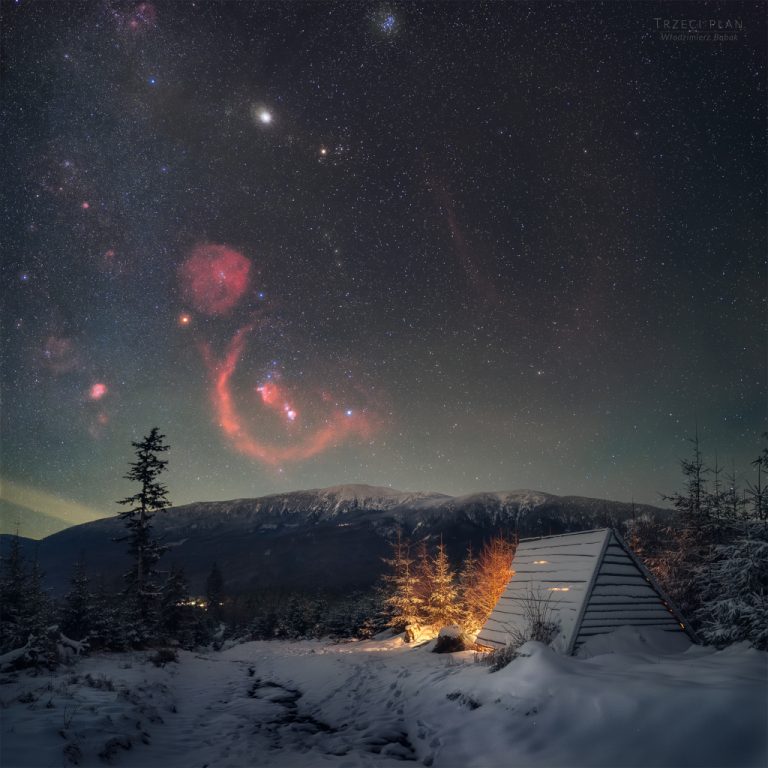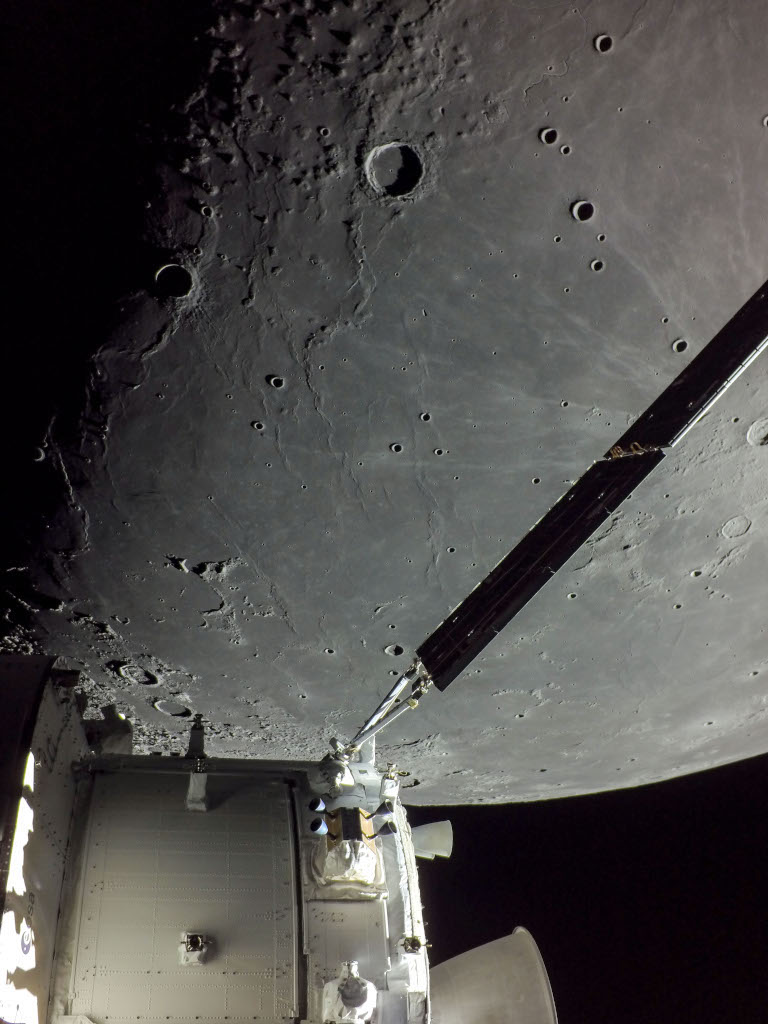十二月的冬夜
See Explanation. Clicking on the picture will download the highest resolution version available.
请参阅说明。单击图片将下载可用的最高分辨率版本。

See Explanation. Clicking on the picture will download the highest resolution version available.
请参阅说明。单击图片将下载可用的最高分辨率版本。

The top half glows red, while the bottom half is filled with dark dust. Protruding into the red is a dark dust lane that resembles a horse’s head. Please see the explanation for more detailed information.
上半部分发出红光,下半部分则充满暗色尘埃。红色部分中突出的是一条暗色尘埃带,形状类似马头。有关更多详细信息,请参阅说明。

A starfield is shown with a nebula glowing in red, purple, and blue. Dark brown gas is also seen on the lower left. A small cluster of stars appears in the center. Please see the explanation for more detailed information.
图中显示的是一片星空,星云发出红、紫、蓝三色光芒。左下方还可以看到深褐色气体。中心出现了一个小星团。有关更多详细信息,请参阅说明。

See Explanation. Clicking on the picture will download the highest resolution version available.
请参阅说明。单击图片将下载可用的最高分辨率版本。

2024年1月31日 Camera Orion Rising Image Credit & Copyright: Marcin Ślipko Explanation: What does Orion rising look like to a camera? During this time of the year, the famous constellation is visible to the southeast just after sunset. From most Earthly locations, Orion’s familiar star pattern, highlighted by the three-stars-in-a-row belt stars, rises sideways. An entire section of the night sky that includes Orion was photographed rising above Śnieżka, a mountain on the border between Poland and the Czech Republic. The long duration exposure sequence brings up many faint features including the Orion and Flame Nebulas, both encompassed by the curving Barnard’s Loop. The featured wide-angle camera composite also captured night sky icons including the blue Pleiades star cluster at the image top and the red…

2024年1月16日 The Orion You Can Almost See Image Credit & Copyright: Michele Guzzini Explanation: Do you recognize this constellation? Although it is one of the most recognizable star groupings on the sky, this is a more full Orion than you can see — an Orion only revealed with long exposure digital camera imaging and post– processing. Here the cool red giant Betelgeuse takes on a strong orange tint as the brightest star on the upper left. Orion‘s hot blue stars are numerous, with supergiant Rigel balancing Betelgeuse on the lower right, and Bellatrix at the upper right. Lined up in Orion’s belt are three stars all about 1,500 light-years away, born from the constellation’s well-studied interstellar clouds. Just below Orion’s belt is a bright but…

2023年12月7日 Orion and the Ocean of Storms Image Credit: NASA, Artemis 1 Explanation: On December 5, 2022, a camera on board the uncrewed Orion spacecraft captured this view as Orion approached its return powered flyby of the Moon. Beyond one of Orion’s extended solar arrays lies dark, smooth, terrain along the western edge of the Oceanus Procellarum. Prominent on the lunar nearside Oceanus Procellarum, the Ocean of Storms, is the largest of the Moon’s lava-flooded maria. The lunar terminator, shadow line between lunar night and day, runs along the left of this frame. The 41 kilometer diameter crater Marius is top center, with ray crater Kepler peeking in at the edge, just right of the solar array wing. Kepler’s bright rays extend to the north…

2023年11月20日 The Horsehead Nebula Image Credit & Copyright: Mark Hanson & Martin Pugh, SSRO, PROMPT, CTIO, NSF Explanation: Sculpted by stellar winds and radiation, a magnificent interstellar dust cloud by chance has assumed this recognizable shape. Fittingly named the Horsehead Nebula, it is some 1,500 light-years distant, embedded in the vast Orion cloud complex. About five light-years “tall,” the dark cloud is cataloged as Barnard 33 and is visible only because its obscuring dust is silhouetted against the glowing red emission nebula IC 434. Stars are forming within the dark cloud. Contrasting blue reflection nebula NGC 2023, surrounding a hot, young star, is at the lower left of the full image. The featured gorgeous color image combines both narrowband and broadband images recorded using several…

2022年12月8日 Orion and the Ocean of Storms Image Credit: NASA, Artemis 1 Explanation: A camera on board the uncrewed Orion spacecraft captured this view on December 5 as Orion approached its return powered flyby of the Moon. Below one of Orion’s extended solar arrays lies dark, smooth, terrain along the western edge of the Oceanus Procellarum. Prominent on the lunar nearside Oceanus Procellarum, the Ocean of Storms, is the largest of the Moon’s lava-flooded maria. The lunar terminator, shadow line between lunar night and day, runs along the left of the frame. The 41 kilometer diameter crater Marius is top center, with ray crater Kepler peeking in at the edge, just right of the solar array wing. Kepler’s bright rays extend to the north and…

2022年11月28日 Leonid Meteors Through Orion Image Credit & Copyright: Luo Hongyang Explanation: Where will the next meteor appear? Even during a meteor shower, it is practically impossible to know. Therefore, a good way to enjoy a meteor shower is to find a place where you can sit comfortably and monitor a great expanse of dark sky. And it may be satisfying to share this experience with a friend. The meteor shower depicted was the 2022 Leonids which peaked earlier this month, and the view is from Hainan, China looking out over the South China Sea. Meteor streaks captured over a few hours were isolated and added to a foreground image recorded earlier. From this place and time, Leonid meteors that trace back to the constellation…